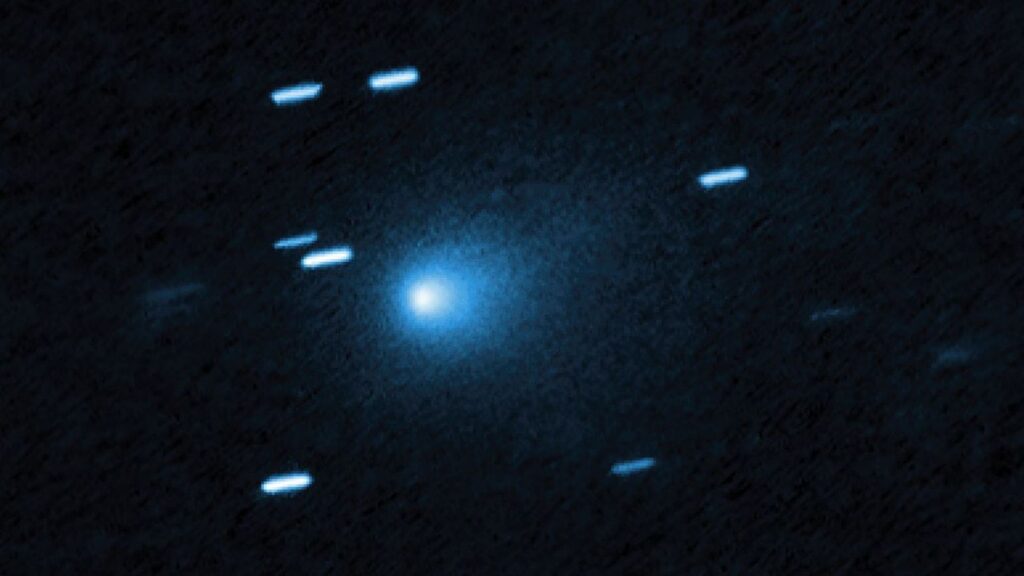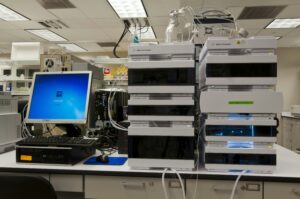
The interstellar comet 3I/ATLAS is poised for a significant astronomical event as it reaches its perihelion on October 30. This marks the comet’s closest approach to the sun, a point at which it is expected to exhibit heightened activity. Although 3I/ATLAS is currently obscured from Earth’s view due to its position behind the sun, several spacecraft throughout the solar system are strategically positioned to observe this celestial visitor.
At perihelion, 3I/ATLAS will be 1.35 astronomical units away from the sun, equivalent to approximately 125 million miles or 202 million kilometers. This distance is significant as it allows scientists to study the comet’s behavior when exposed to the sun’s intense heat. As the comet approaches the sun, the warmth causes the ices on its surface to sublimate, leading to the formation of a coma—a cloud of gas and dust surrounding the nucleus. Additionally, comets often develop two distinct tails: a dust tail and an ion tail, the latter formed by charged particles stripped away by the solar wind.
Understanding Perihelion and Its Effects
Perihelion is a critical phase for comets, especially those with highly eccentric orbits. Unlike planets with near-circular paths, comets experience dramatic changes as they near the sun. The increased solar energy causes intense outgassing, making the comet brighter and more noticeable. For 3I/ATLAS, this period is particularly intriguing as it offers a rare glimpse into the composition and behavior of an interstellar object.
Despite its current invisibility from Earth, the comet’s trajectory allows it to have a perihelion approach, albeit not in a traditional orbit around the sun. Unfortunately, 3I/ATLAS entered solar conjunction at the end of September, disappearing into the sun’s glare. It will not reappear in the Earth’s sky until late November or early December, meaning ground-based telescopes and those in Earth orbit will miss this perihelion.
Spacecraft Observations: A Unique Opportunity
While Earth-based observations are on hold, a fleet of spacecraft is well-positioned to study 3I/ATLAS. Notably, missions at Mars have a clear view of the sun’s hemisphere that the comet is currently rounding. Mars missions had a prime vantage point during the comet’s closest approach to the Red Planet on October 3, when it was just 0.19 AU away, approximately 17.6 million miles or 28.4 million kilometers.
Other missions, such as NASA’s Psyche and Lucy, are also set to observe the comet. The European Space Agency’s Jupiter Icy Moons Explorer (JUICE) is on a trajectory that brings it near 3I/ATLAS. However, JUICE’s primary antenna is currently serving as a sun-shield, delaying data transmission back to Earth until February.
Scientific Implications and Discoveries
Scientists are eager to analyze the comet’s chemistry at perihelion. The gases and dust emitted provide insights into its composition, revealing details about the molecular cloud from which it originated. Previous observations have shown that 3I/ATLAS contains more carbon dioxide and nickel than typical solar system comets. These findings offer a window into the comet’s birthplace, a star system over seven billion years old, and allow for comparisons with our solar system’s chemistry.
As perihelion approaches, researchers anticipate uncovering additional molecular signatures. The presence or absence of elements like iron could further illuminate the conditions of the comet’s formation. Such data not only enrich our understanding of 3I/ATLAS but also enhance our knowledge of interstellar objects as a whole.
Looking Ahead
The study of 3I/ATLAS during this perihelion is a unique opportunity for astronomers to gather data on an interstellar visitor. The insights gained could reshape our understanding of cometary chemistry and the processes that govern these ancient travelers. As spacecraft continue to monitor the comet, the scientific community eagerly awaits the data that will soon be transmitted back to Earth, promising to shed light on the mysteries of our universe.





